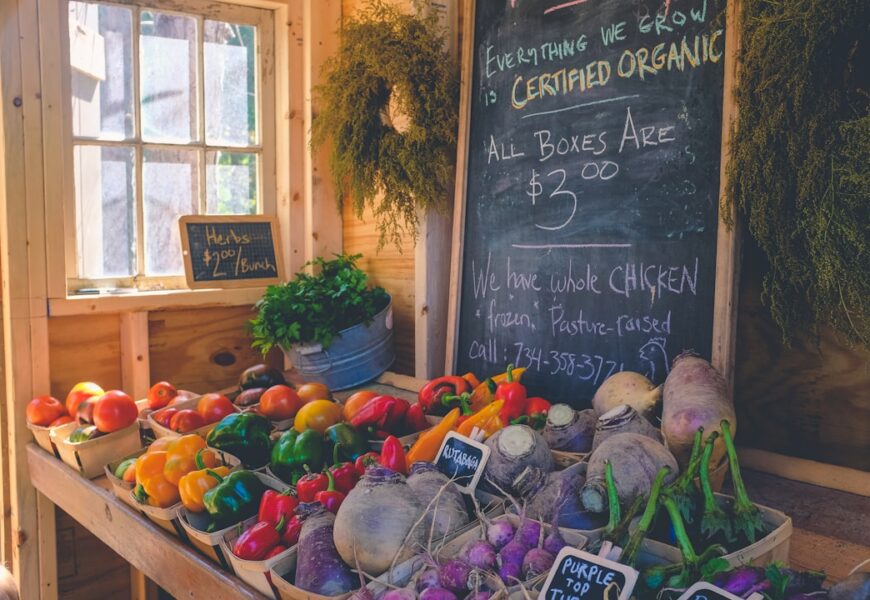The Benefits of Eating Locally Grown Superfoods
Introduction
Welcome to the vibrant world of local superfoods—where nutrition meets community support! Eating locally grown, nutrient-packed superfoods not only boosts your health but also benefits the environment and bolsters your local economy. Imagine biting into a juicy, sun-ripened berry or crunching on fresh kale – these simple pleasures bring profound health benefits. In this blog, we’ll explore how integrating these powerful foods into your diet can elevate your well-being and contribute to a more sustainable world. Let’s dive into the myriad benefits of choosing local and making superfoods a staple on your plate!
Health Benefits of Locally Grown Superfoods

Nutrient Dense Foods
When you choose locally grown superfoods, you’re opting for a powerhouse of nutrition that’s hard to beat. Superfoods, by definition, are foods that are exceptionally nutrient-dense, packed with vitamins, minerals, antioxidants, and other health-promoting substances. The closer these foods are grown to where they are consumed, the fresher they are, and consequently, the more nutrients they retain. Transporting food over long distances often requires picking them before they are fully ripe, which can diminish their nutritional content. Local superfoods like kale, blueberries, and spinach reach you at their nutritional peak, offering maximum health benefits.
Support Immune System
Incorporating locally sourced superfoods into your diet can play a significant role in boosting your immune system. Foods that are grown and harvested in their optimal conditions contain higher levels of key nutrients such as Vitamin C, selenium, and zinc, which are crucial for immune defense. Moreover, local superfoods tend to be fresher, which preserves their natural enzymes and vitamins that are essential to maintaining good health and fighting off infections. Regularly consuming local superfoods like garlic, ginger, and honey can provide a natural boost to your immune function.
Better for Digestion
One of the lesser-known yet significant benefits of eating locally grown superfoods is improved digestion. Fresh, locally harvested produce maintains higher levels of fiber and live enzymes, both of which are essential for healthy digestion. Fiber aids in regulating the digestive system, reducing bloating, and preventing constipation. Meanwhile, enzymes facilitate the breakdown of food, making nutrients more accessible for absorption by the body. Superfoods like chia seeds and apples, when sourced locally, provide the best digestion aid, ensuring your gut stays healthy and active.
Environmental Benefits of Consuming Locally Grown Superfoods
Reduced Carbon Footprint
Choosing to consume locally grown superfoods not only benefits your health but also the environment. One of the most significant environmental advantages is the reduction of the carbon footprint associated with food transportation. Foods grown locally require much less transportation, which means they generate fewer greenhouse gases compared to those shipped across the country or imported from other parts of the world. This lower dependence on fossil fuels contributes significantly to reducing your personal and communal carbon imprint. By favoring local superfoods, you are actively participating in a movement that prioritizes our planet’s health.
Supports Local Farmers
Apart from environmental benefits, supporting local farmers is a direct consequence of consuming locally sourced superfoods. When you buy from local producers, you contribute to the local economy and help in sustaining the agricultural community. This support not only aids farmers in maintaining their livelihood but also encourages them to practice sustainable farming methods. Local farmers are more likely to use organic and eco-friendly practices, knowing that their consumers are neighbors who care about both the quality of the products and the environmental impact of their cultivation methods.
Promotes Biodiversity
Eating locally grown superfoods contributes to the maintenance and enhancement of biodiversity. Local farmers are often more inclined to plant a diverse array of crops to meet the seasonal demand and to adapt to local climatic conditions. This diversity helps prevent the dominance of single-crop cultures, which can deplete the soil of nutrients and damage local ecosystems. Additionally, cultivating a variety of crops encourages a healthier pollination ecosystem, which is essential for the growth of plants and the survival of pollinators like bees. Biodiversity not only makes ecosystems more resilient but also ensures that we continue to enjoy a variety of nutrients in our diets.
Economic Benefits of Buying Locally Grown Superfoods
Boosts Local Economy
Investing in locally grown superfoods doesn’t just benefit your health; it also significantly bolsters the local economy. When you purchase superfoods like blueberries, kale, and quinoa from local farmers, your money goes directly into the pockets of local growers and stays within the community. This increases the overall economic health of the area. Local farmers are likely to spend their earnings locally as well, creating a multiplier effect. Essentially, each dollar spent on local produce can generate two to four times more revenue for the local economic base compared to money spent at non-local businesses.
Reduces Food Miles
Choosing local superfoods significantly cuts down on food miles – the distance food travels from production to consumer. Less travel not only means fresher, more nutrient-rich foods but also a substantial reduction in carbon emissions and energy consumption associated with long-distance transportation. This supports a more sustainable food system. By reducing the need for shipping and heavy refrigeration, buying local helps minimize environmental impacts, making it a practical choice for those looking to lead a more eco-friendly lifestyle.
Supports Small-Scale Farmers
Purchasing your superfoods from local sources provides crucial support for small-scale farmers who might otherwise struggle to compete in the broader agricultural market. These farmers often use sustainable, organic farming methods that are better for the soil and ecosystems. By supporting them, you’re not only getting healthier products but also contributing to more sustainable farming practices. Moreover, this support helps preserve the local agricultural heritage and ensures the availability of diverse and culturally specific crops for future generations.
How to Incorporate Locally Grown Superfoods into Your Diet

Visit Farmers Markets
One of the simplest ways to start incorporating more locally grown superfoods into your diet is by visiting farmers markets. These markets offer a variety of fresh, local produce directly from the growers. You’ll find seasonal superfoods that are at their nutritional peak, plus it’s a great opportunity to learn more about where your food comes from and how it’s grown. Don’t hesitate to ask farmers about their farming practices and suggestions for preparing their produce. This not only enhances your connection with the food but often leads to discovering new and exciting ways to enjoy superfoods.
Join a Community Supported Agriculture (CSA) Program
Joining a CSA program is another excellent approach to include more local superfoods in your meals. When you become a CSA member, you purchase a “share” from a local farm and, in return, receive a box of seasonal produce each week throughout the farming season. This not only ensures that you have fresh and nutritious superfoods regularly but also introduces you to new varieties and inspires you to cook different dishes. It’s an adventure in every box, challenging you to make the most of the fresh ingredients you receive.
Grow Your Own Superfoods
For those with the space and inclination, growing your own superfoods can be incredibly rewarding. Not only does this make it easy to have fresh superfoods at your fingertips, but gardening can also be therapeutic and fulfilling. Start with easy-to-grow items like spinach, berries, or sweet potatoes. You can use outdoor garden beds, pots on a patio, or even window boxes if space is limited. Watching your food grow from seed to harvest provides a unique sense of accomplishment and an even greater appreciation for the food on your plate. Plus, you can be sure of the organic nature of your food when you are in control from start to finish.
Conclusion
As we have explored, integrating locally grown superfoods into your diet is not just a nutritious choice but also a sustainable one. By choosing local produce, you contribute to lessening your environmental impact while enjoying fresher, nutrient-rich foods that support your health in numerous ways. It’s a win-win situation for both personal wellness and ecological well-being. Embrace the power of local superfoods and feel the difference in your life and your community!










